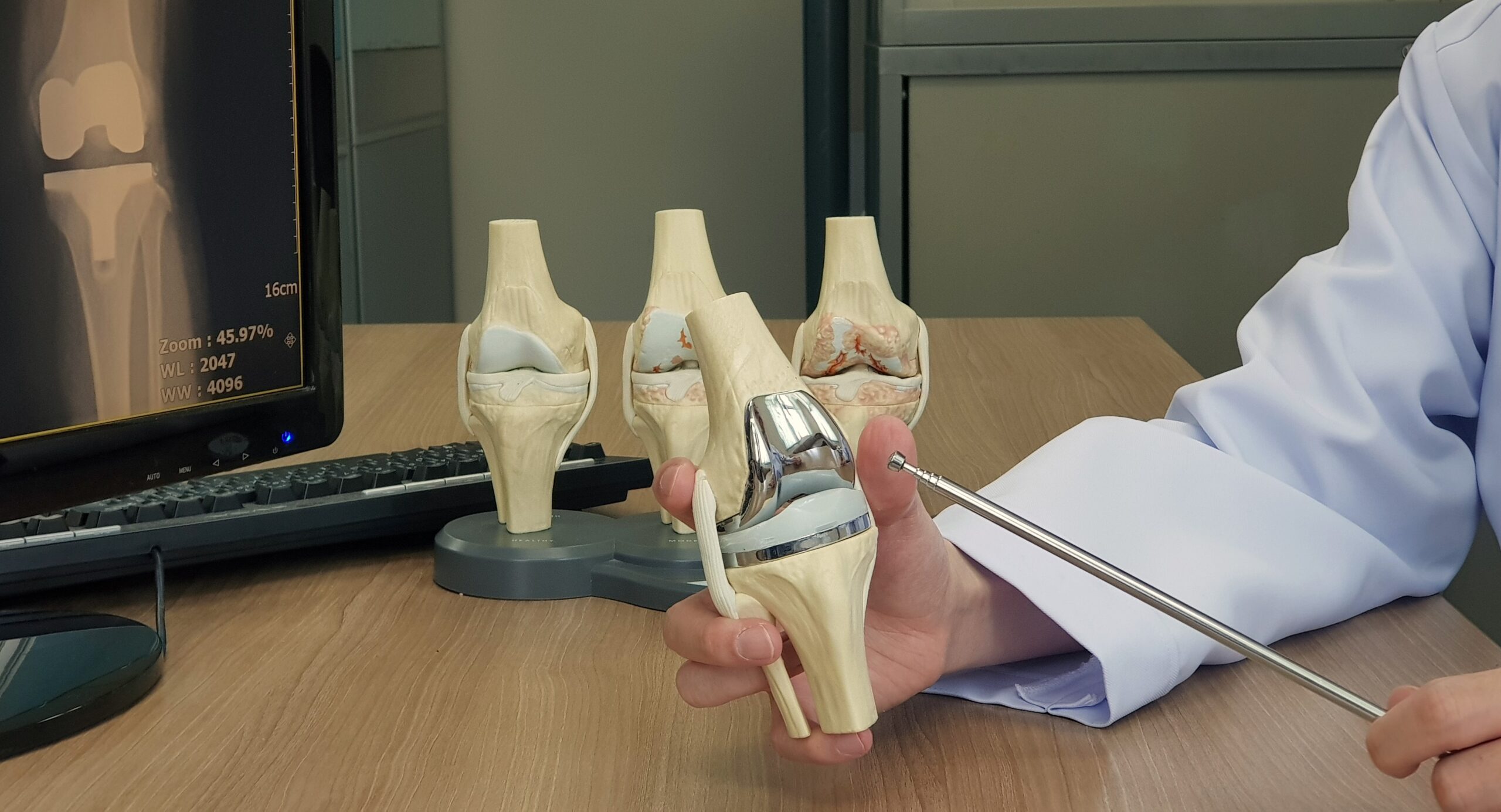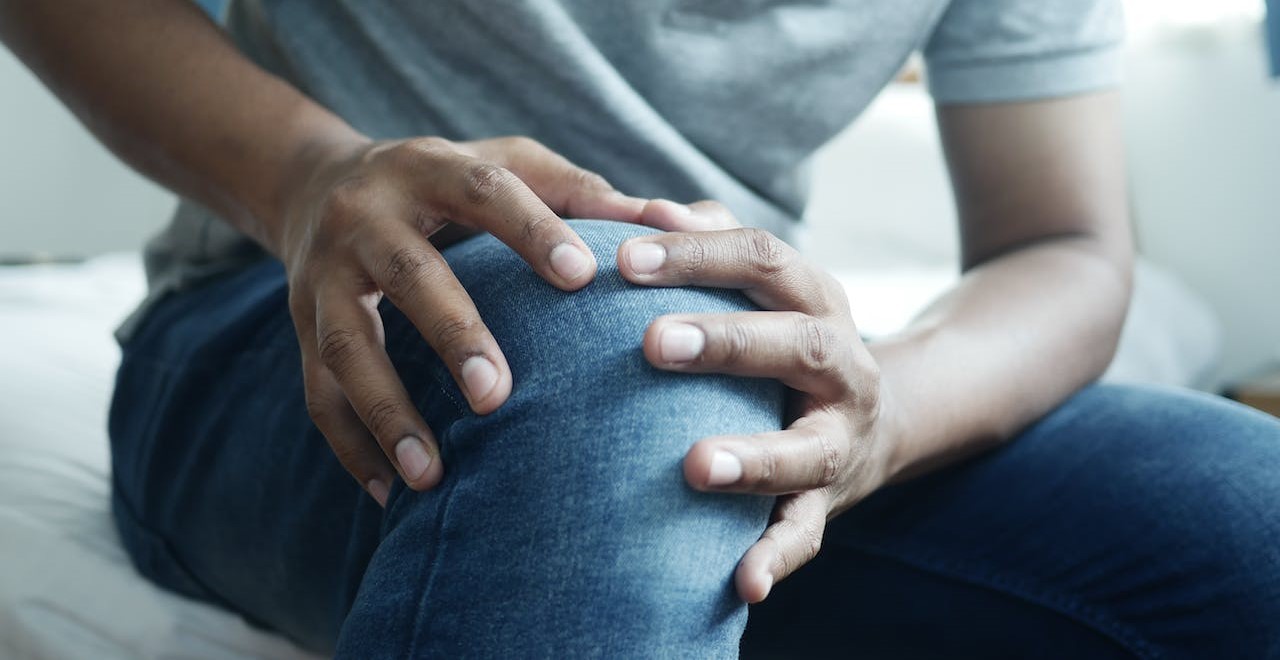Experiencing Kneecap Pain
Kneecap pain affects people of various ages and activity levels. It can arise from various causes, ranging from acute injuries to chronic conditions, and can significantly impact an individual’s mobility and quality of life.
Understanding the common causes of kneecap pain aids in effective pain management:
1. Patellofemoral Pain Syndrome
Patellofemoral Pain Syndrome (PFPS) is a prevalent cause of kneecap pain, particularly among athletes and physically active people. It is exacerbated by activities that pressure the knee joint, such as running and squatting.
Aetiology
The syndrome is often attributed to imbalances in muscle strength and flexibility, improper knee alignment, or overuse, leading to increased stress on the patellofemoral joint. This stress can cause discomfort in the soft tissues and joint surfaces around the kneecap.
Symptoms
People may experience aching pain at the front of the knee, which may worsen during exercise, prolonged sitting, or knee-bending movements. They may also feel cracking or grinding in the knee joint during movement.
Diagnosis
This condition can be diagnosed through a clinical examination, where a medical specialist assesses pain, joint alignment, muscle strength, and flexibility. Imaging tests, like MRI or X-rays, are not usually required but may be conducted to rule out other conditions.
2. Trauma and Fractures
Trauma and fractures can result from direct blows to the knee, falls, or high-impact activities, and they can lead to varying degrees of damage to the patella and surrounding structures in the knee.
Aetiology
Direct trauma: A strong impact directly to the kneecap, such as a fall onto the knee or being hit by an object.
Indirect trauma: A severe strain on the knee joint causing the patella to fracture under stress, commonly observed in injuries associated with jumping or twisting movements.
Symptoms
Symptoms of this condition include immediate, severe pain at the injury site, along with swelling and bruising around the kneecap. Those affected may find it difficult to bend the knee and bear weight on the affected leg. A visible deformity or gap in the kneecap may be observed in cases of a fracture.
Diagnosis
X-rays are the primary tool to confirm the presence of a fracture and assess its severity. CT scans and MRIs provide further details on the injury’s extent and surrounding tissues’ involvement.
3. Tendinitis and Overuse Injuries
Tendinitis and overuse injuries of the knee are common among athletes, fitness enthusiasts, and people with occupations requiring repetitive knee movements.
Aetiology
Patellar Tendinitis: This condition is characterised by inflammation of the patellar tendon, which connects the kneecap to the shinbone. It is prevalent in sports involving frequent jumping and running.
Quadriceps Tendinitis: Inflammation of the tendon that connects the quadriceps muscles to the kneecap. This condition is often seen in athletes and active people.
Overuse: Repetitive knee flexion and extension can lead to micro-tears in the tendons and surrounding soft tissues, causing pain and inflammation.
Symptoms
Symptoms include pain at the front of the knee, below the kneecap for patellar tendinitis, or above the knee for quadriceps tendinitis. There may also be swelling and tenderness around the affected tendon.
Diagnosis
Diagnosis usually involves a clinical examination focusing on the knee’s range of motion, tenderness, and swelling. An ultrasound or MRI may be utilised to assess the extent of tendon damage or to rule out other conditions.
4. Bursitis Around the Kneecap
Bursitis occurs when the tiny fluid-filled sacs that cushion the knee joint become inflamed, significantly reducing the affected individual’s mobility.
Aetiology
Repetitive Motion: Frequent kneeling or activities that put pressure on the knees can irritate and inflame the bursae.
Direct Trauma: A blow to the knee can cause acute bursitis, leading to swelling, pain, and reduced movement.
Infection: Sometimes, the bursa can become infected, requiring prompt medical treatment.
Symptoms
Swelling over the kneecap, pain and tenderness around the knee, or redness over the affected area indicate inflammation.
Diagnosis
Diagnosis involves a physical examination focusing on the knee’s appearance, swelling, and range of motion. If an infection is suspected, fluid from the bursa may be aspirated and analysed.
5. Osteoarthritis of the Knee
Osteoarthritis (OA) of the knee is a degenerative joint disease resulting from the wear and tear of cartilage, which cushions the ends of bones within the joint.
Aetiology
Age: The risk of developing OA increases as the cumulative effects of wear on the joint surfaces become more significant over time.
Weight: Excess body weight imposes additional stress on the knee joints, accelerating cartilage breakdown.
Joint Injury: Previous injuries to the knee, such as fractures or ligament tears, can increase the risk of OA later in life.
Symptoms
People may experience pain and tenderness in the knee, especially after activity or long periods of inactivity. There may also be stiffness, swelling and a loss of flexibility in the knee joint.
Diagnosis
Diagnosing OA requires a clinical examination, reviewing the patient’s history, and imaging tests. X-rays can identify bone structure changes and bone spurs, while MRI scans provide detailed images of the joint’s soft tissues, such as cartilage loss.
Conclusion
Understanding the underlying causes of kneecap pain is important for effective treatment to control and manage it. While some causes stem from acute injuries that demand immediate attention, others result from chronic conditions that require ongoing management strategies. Early intervention and adherence to a tailored treatment plan are essential for minimising the impact of knee conditions on one’s life.



